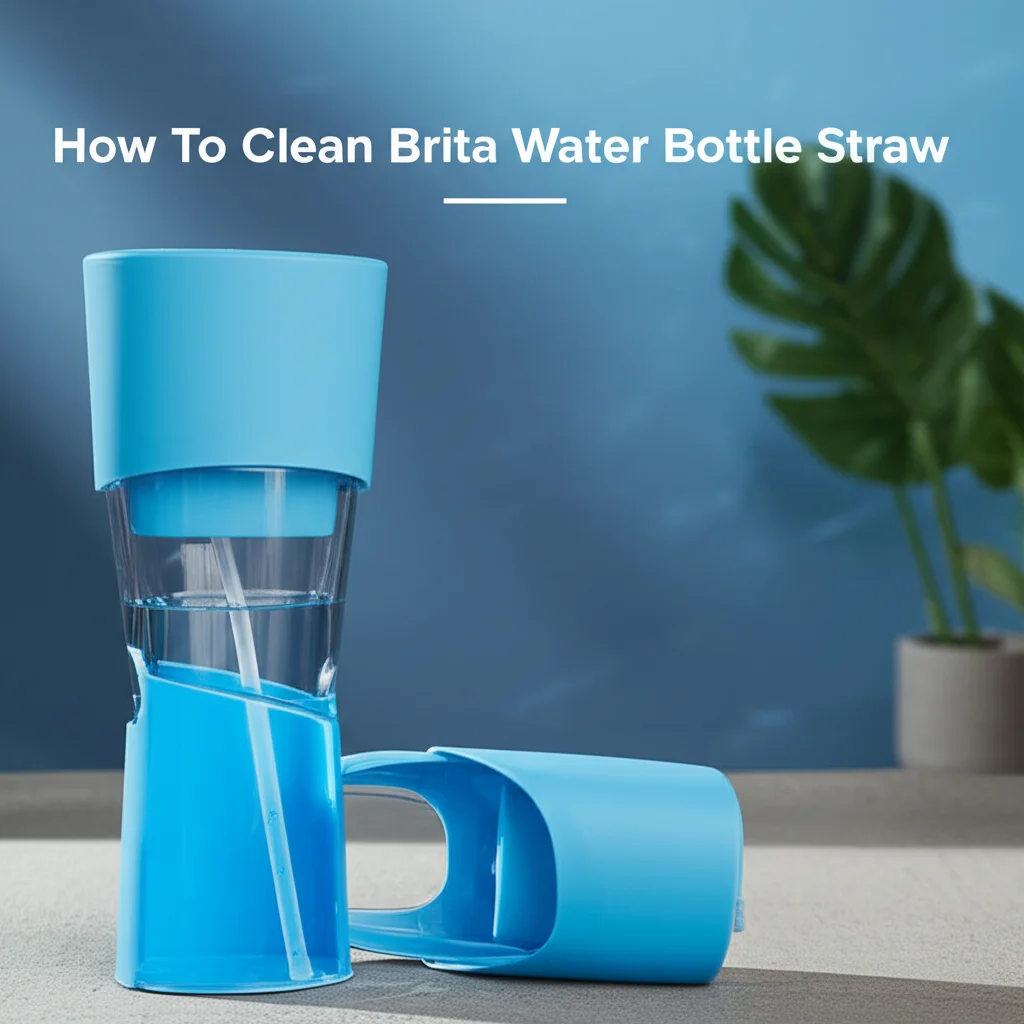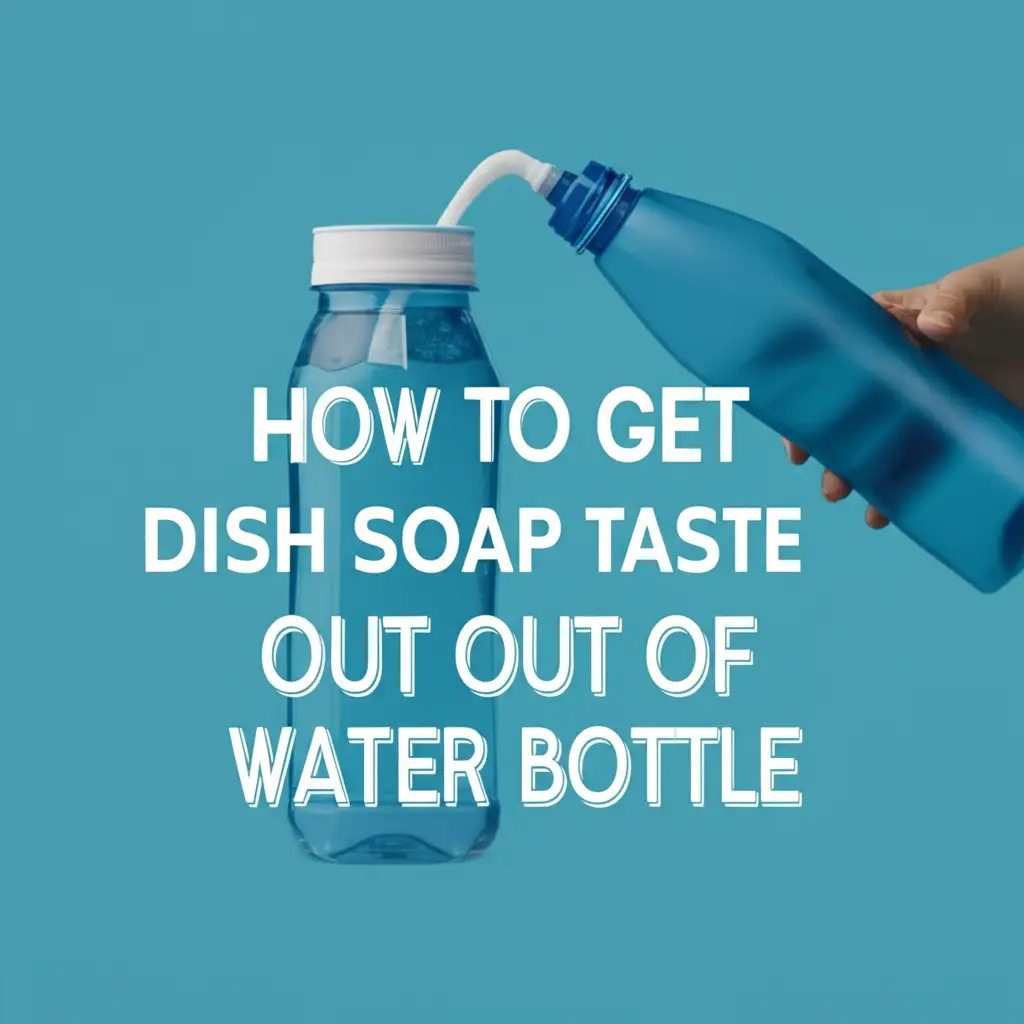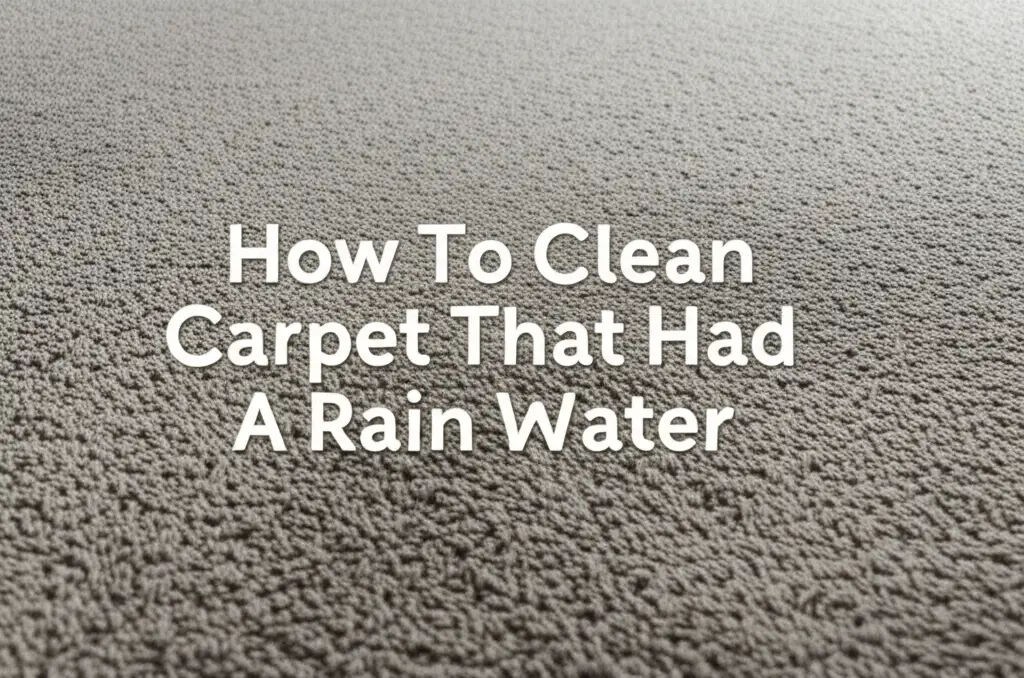· Todd Martin · Home Care · 13 min read
How To Clean Brita Water Bottle Straw

Clean Your Brita Water Bottle Straw Effectively
Imagine taking a refreshing sip from your Brita water bottle, only to find a peculiar taste or sight in the straw. It is a common problem. Over time, Brita water bottle straws can harbor residue, mineral deposits, or even mold. This happens from constant moisture exposure and everyday use. Keeping your straw clean is essential for good hygiene and the best taste. I find that a clean straw makes my filtered water taste even better. This guide will show you how to properly clean Brita water bottle straws. We will cover daily maintenance and deep cleaning methods. You will learn the tools you need and tips to keep your straw sparkling.
Takeaway:
- Regularly clean your Brita water bottle straw to prevent mold and build-up.
- Use a small brush and warm soapy water for daily cleaning.
- Deep clean with vinegar or baking soda for tough stains and odors.
- Always let parts air dry completely before reassembling.
To effectively clean your Brita water bottle straw, disassemble it and wash thoroughly with warm, soapy water and a thin straw brush. For stubborn build-up or odors, soak the straw in a solution of equal parts white vinegar and water, or a baking soda paste, then rinse completely and air dry.
Why Your Brita Straw Needs Regular Cleaning
Your Brita water bottle straw is a small but important part. It helps you drink filtered water easily. However, this straw also acts as a perfect spot for unwanted growth. Moisture sits in the straw after each use. This creates a damp environment inside. Over time, bacteria, mold, and mineral deposits can accumulate. This build-up affects the taste of your water. It also poses health risks if left uncleaned. I always make sure to keep my straw clean for these reasons.
Ignoring straw cleaning can lead to unpleasant smells. It can also cause visible discoloration. Sometimes, you might see black spots forming inside. These spots are typically mold or mildew. They thrive in dark, moist places. Hard water deposits, common in many homes, also stick to the plastic. These appear as white or cloudy film. A dirty straw defeats the purpose of filtered water. It is important to clean your Brita water bottle straw regularly. This ensures fresh-tasting water and promotes better health. You want your filtered water to be truly clean.
Essential Tools for Brita Straw Cleaning
Having the right tools makes cleaning your Brita water bottle straw simple. You do not need many specialized items. Most are probably already in your home. The most important tool is a straw cleaning brush. These are thin and flexible. They reach deep inside the straw. I keep a few of these brushes on hand. They are inexpensive and very effective.
You will also need warm water and dish soap. Basic dish soap breaks down oils and residues. For deeper cleaning, white vinegar is excellent. It helps remove mineral deposits and odors. Baking soda also works well for scrubbing and deodorizing. A small bowl or basin is useful for soaking. Clean cloths or paper towels are needed for drying. Make sure all your tools are clean before you start. This prevents transferring dirt to your straw. Having these items ready streamlines the cleaning process.
- Straw Cleaning Brush: This is vital. Choose one that fits inside the Brita straw. Look for brushes with sturdy bristles.
- Dish Soap: Any standard dish soap works. It cuts grease and grime.
- Warm Water: Warm water helps dissolve residue better.
- White Vinegar: An acidic cleaner, perfect for hard water stains and odors.
- Baking Soda: A mild abrasive and deodorizer.
- Small Bowl/Basin: For soaking the straw.
- Clean Cloth/Paper Towels: For drying.
Step-by-Step Daily Brita Straw Cleaning
Daily cleaning keeps your Brita water bottle straw fresh. It prevents major build-up. This routine is quick and easy. I usually do this after emptying my bottle for the day. First, detach the straw from your Brita water bottle lid. Most Brita straws pull straight off. It is important to separate all parts. This allows you to clean every surface. Next, rinse the straw under warm running water. This flushes out any loose particles. It helps remove water residue.
Apply a small amount of dish soap to your straw cleaning brush. Insert the brush into the straw. Push it all the way through. Scrub the inside thoroughly. Make sure to cover the entire length of the straw. Pull the brush out and reinsert from the other end. This ensures a complete scrub. Rinse the straw well under running water. Make sure all soap residue is gone. Look inside to check for cleanliness. You should see no lingering film or particles. Finally, let the straw air dry completely. Place it on a clean dish rack or paper towel. Air drying prevents mold growth. A daily routine takes only minutes. It makes a big difference.
- Disassemble the straw: Carefully pull the straw away from the Brita lid assembly.
- Rinse with warm water: Hold the straw under running warm water. Let water flow through it.
- Apply soap to brush: Put a drop of dish soap on your thin straw cleaning brush.
- Scrub inside: Push the brush through the straw. Scrub the inner walls. Repeat from the other end.
- Rinse thoroughly: Rinse the straw again under warm water. Ensure all soap is gone.
- Air dry: Place the straw on a clean surface. Let it air dry completely before reassembling.
Deep Cleaning Your Brita Water Bottle Straw
Sometimes, daily cleaning is not enough. You might notice persistent odors or stains. This indicates it is time for a deep clean. Deep cleaning removes stubborn hard water stains, mold, and trapped grime. I deep clean my Brita straw once a week or every two weeks. There are two effective methods for a thorough clean: vinegar soaking or baking soda scrubbing. Both are natural and powerful. These methods are excellent for general cleaning too. For instance, many home cleaning tasks benefit from these same ingredients, such as learning how to clean with vinegar and baking soda.
Method 1: Vinegar Soak for Hard Water and Odors
Vinegar is a natural descaler and deodorizer. It works wonders on mineral deposits and mold. First, mix equal parts white vinegar and warm water in a small bowl. Make enough solution to fully submerge your Brita straw. Place the disassembled straw into the vinegar solution. Ensure it is completely covered. Let it soak for at least 30 minutes. For very tough stains or odors, you can soak it for several hours or even overnight. The vinegar will break down the residue. After soaking, use your straw brush to scrub the inside of the straw. The softened grime will come off easily. Rinse the straw extensively under running water. Ensure no vinegar smell remains. Allow it to air dry fully. This method is similar to cleaning hard water from a shower head, using vinegar to tackle mineral build-up.
Method 2: Baking Soda Scrub for Stains and Residue
Baking soda is a gentle abrasive and powerful deodorizer. It helps lift stains and neutralize smells. Make a paste by mixing a small amount of baking soda with water. The paste should be thick but spreadable. Apply this paste to your straw cleaning brush. Insert the brush into the straw. Scrub the inside vigorously. Pay attention to any discolored areas. The baking soda will help scrub away stains. For external stains, you can rub the paste directly onto the straw with a clean cloth. Let the paste sit on the straw for a few minutes. This allows it to work on the stains. Rinse the straw thoroughly under running water. Ensure all baking soda is removed. I often find that combining the power of baking soda and vinegar can be very effective for various cleaning challenges, even for things like knowing how to clean your dishwasher with vinegar and baking soda. Air dry the straw completely before use. This method is great for general grime and tough odors.
Preventing Mold and Hard Water Build-up
Preventing mold and hard water build-up is easier than removing it. Good habits make a big difference. The key is proper drying. Always let your Brita water bottle straw air dry completely after every wash. Moisture is mold’s best friend. Leaving even a little water inside creates a breeding ground. I always ensure my straw is bone dry before putting it away or reassembling the bottle. Placing it upright on a drying rack helps air circulate inside. This speeds up drying.
Consider the type of water you use. Brita filters help reduce impurities. However, if your tap water is very hard, mineral deposits can still form over time. These deposits appear as white, chalky residue. Regular cleaning with vinegar or a descaling solution helps. You can also explore options for your home’s water supply if hard water is a consistent problem. Keeping your bottle and straw clean from the start saves effort later. Just like learning how to clean a 5-gallon water bottle requires attention to drying, your Brita straw does too. Consistent daily cleaning and thorough drying are your best defense against common issues.
- Thorough Drying: After every wash, ensure the straw is completely dry. Place it on a drying rack to allow air circulation.
- Regular Cleaning Schedule: Stick to a daily quick clean and a weekly deep clean. This prevents accumulation.
- Use Filtered Water: While Brita filters impurities, the source water’s hardness can still impact residue. Regular cleaning helps manage this.
- Store Disassembled (if possible): When not in use for extended periods, store the straw detached from the bottle. This allows for better airflow.
When to Replace Your Brita Water Bottle Straw
Even with diligent cleaning, Brita water bottle straws do not last forever. They are made of plastic. Over time, plastic can degrade. It can also hold onto odors or stains that cleaning cannot remove. Knowing when to replace your straw is important for hygiene and performance. I pay attention to a few signs. These tell me it is time for a new one.
First, look for visible damage. Cracks, tears, or significant discoloration are clear indicators. Damaged plastic can harbor bacteria. It also makes the straw less effective. Second, persistent odors or tastes are a sign. If your water still tastes off after a deep clean, the straw might be the culprit. Plastic can absorb flavors over time. Third, consider the age of your straw. Brita recommends replacing filters regularly. While they do not give a specific lifespan for straws, general wear and tear occurs. If your straw looks worn, even without visible damage, it is wise to replace it. A fresh straw ensures your filtered water tastes its best. Brita sells replacement straws. This makes it easy to keep your bottle performing optimally.
- Visible Damage: Look for cracks, chips, or tears in the straw.
- Persistent Discoloration: If the straw remains stained or discolored after deep cleaning.
- Unpleasant Odor/Taste: If your water still has an off-taste or smell despite thorough cleaning.
- Age and Wear: Over time, plastic degrades. If the straw feels old or worn, replace it.
Troubleshooting Common Straw Cleaning Issues
Sometimes, you might face specific challenges when cleaning your Brita water bottle straw. These issues can be frustrating. But there are solutions. I have encountered a few common problems myself. Knowing how to troubleshoot them makes the cleaning process smoother.
Issue 1: Stubborn Hard Water Stains. Hard water leaves white, chalky residue. This is common. If a vinegar soak did not work fully, try increasing the soaking time. For very tough spots, make a paste of baking soda and a few drops of vinegar. Apply this paste directly to the stain. Let it sit for 15-30 minutes. Then scrub with your straw brush. The fizzing action helps lift the minerals. Rinse thoroughly. This approach is powerful for mineral deposits, much like tackling hard water stains off chrome.
Issue 2: Mold Spots That Won’t Disappear. Black or green mold spots indicate a deeper issue. If scrubbing with soap and vinegar doesn’t remove them, use a stronger solution. Mix one part bleach with 10 parts water. Soak the straw in this solution for 5-10 minutes. Always rinse extremely thoroughly after using bleach. Bleach is very effective against mold. However, it requires careful handling and rinsing. You could also try a hydrogen peroxide soak (3% solution) for 30 minutes as a bleach alternative.
Issue 3: Lingering Odors After Cleaning. Odors can persist even after visible cleanliness. This is often due to residual bacteria or absorbed smells in the plastic. A longer vinegar soak (overnight) is very effective. You can also try filling the straw with a baking soda paste. Let it sit overnight. The baking soda absorbs odors. Rinse thoroughly the next day. Ensure the straw is completely dry before storage. A dry straw prevents odor-causing bacteria from returning.
Issue 4: Difficulty Drying the Inside of the Straw. Proper drying is crucial. If the straw stays wet, mold can return quickly. After rinsing, shake the straw vigorously to expel water. Then, stand it upright on a drying rack. You can also use a thin, clean cloth or paper towel twisted to fit inside. Gently push it through to absorb moisture. Using a hairdryer on a cool setting from a distance can also help, but be careful not to overheat the plastic.
Maintaining Your Brita Water Bottle for Longevity
Cleaning just the straw is a good start. But a Brita water bottle is a system. For overall hygiene and longevity, maintain the entire bottle. Regular cleaning of all parts ensures your water is truly pure. I always clean my entire bottle with each straw cleaning. This prevents cross-contamination.
Start by disassembling the entire bottle. This includes the lid, filter, and bottle body. Wash the bottle body with warm, soapy water. Use a bottle brush to reach all corners. The lid also needs attention. Many Brita lids have nooks and crannies where grime can hide. Use a small brush or cotton swab for these areas. The filter itself does not need cleaning. It is designed to be replaced. Follow Brita’s recommendations for filter replacement. This usually depends on usage or time. A dirty filter will negate all your straw cleaning efforts. After washing all parts, rinse them thoroughly. Ensure no soap residue remains. Then, air dry everything completely. A fully dry bottle prevents mold and mildew from forming. Proper maintenance extends the life of your Brita bottle. It also ensures you always enjoy clean, fresh-tasting water. This holistic approach ensures your entire hydration system stays clean.
- Disassemble All Parts: Take apart the lid, filter, and bottle body.
- Wash Bottle Body: Use warm, soapy water and a bottle brush.
- Clean the Lid: Pay attention to small crevices. Use a small brush or cotton swab.
- Replace Filter Regularly: Follow Brita’s guidelines for filter replacement. Do not try to clean the filter.
- Thoroughly Rinse All Parts: Ensure no soap or cleaning solution remains.
- Air Dry Completely: Let all components air dry before reassembly or storage.
Conclusion
Keeping your Brita water bottle straw clean is vital for your health and the taste of your water. You have learned how to clean Brita water bottle straws effectively. From daily cleaning to deep dives with vinegar and baking soda, you now have the tools and knowledge. Remember, consistent effort makes a big difference. Preventative measures like thorough drying are your best friends. I encourage you to adopt a regular cleaning routine for your Brita straw and the entire bottle. This ensures every sip you take is fresh, clean, and free from unwanted contaminants. A clean Brita straw means a better hydration experience every day. Invest a few minutes regularly. You will enjoy the benefits of pure, great-tasting filtered water for a long time.





